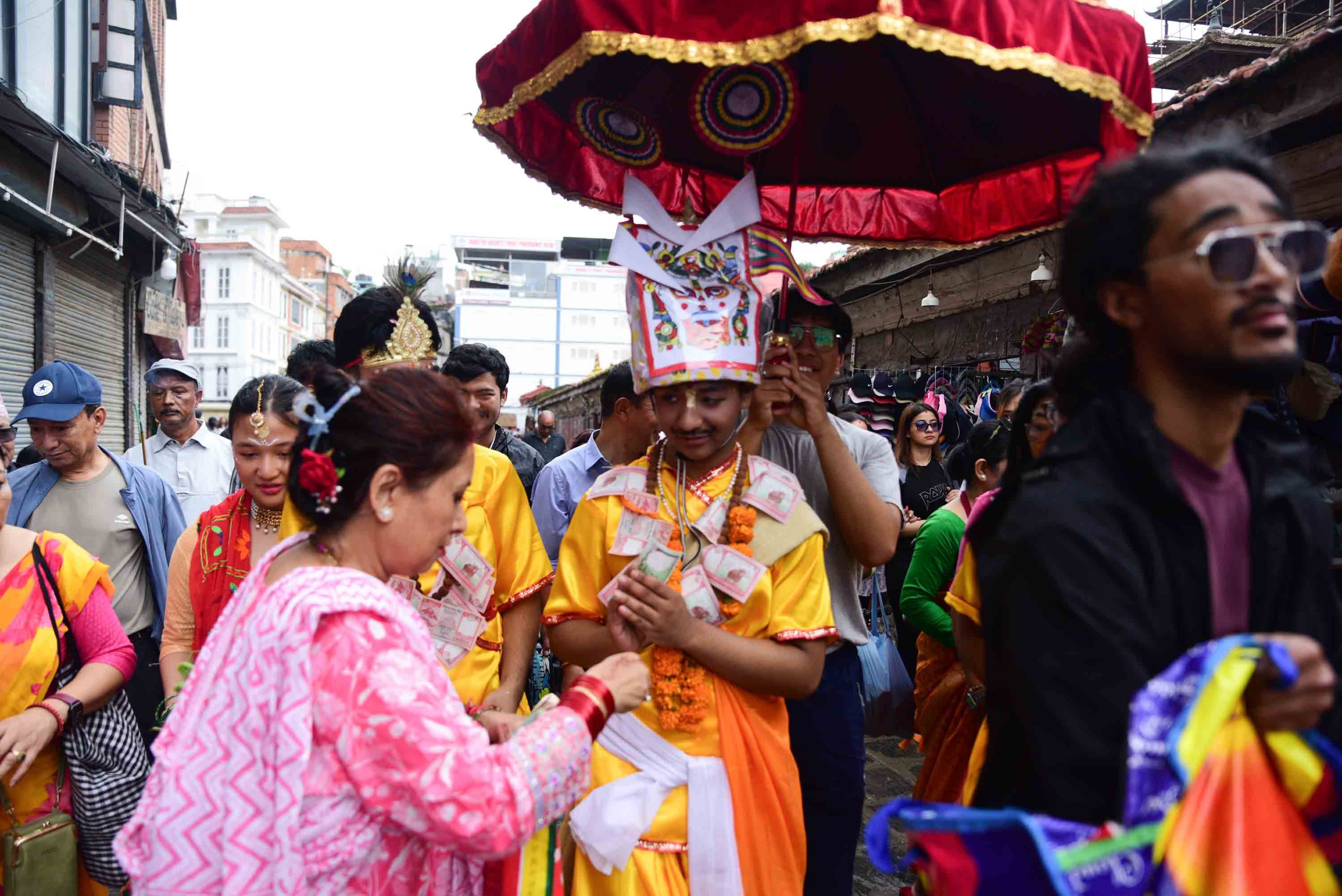Introduction of Gai Jatra : Every year in the heart of the Kathmandu Valley, the narrow streets come alive with processions of decorated cows, children in colorful costumes, and bursts of laughter from satirical street performances. This is Gai Jatra – the Festival of Cows – one of Nepal’s most fascinating and photogenic celebrations.
Celebrated mainly by the Newar community, Gai Jatra blends ancient rituals with humor, turning grief into a shared public expression. In 2026, this unmissable cultural event will be celebrated on Saturday, August 29.
Whether you are a traveler seeking authentic traditions or a photographer chasing vivid street scenes, Gai Jatra offers a once-in-a-lifetime cultural immersion.
The Origin of Gai Jatra Festival

Gai Jatra, known as Sa Paru in Nepal Bhasa, traces its origins back to the reign of King Pratap Malla in the 17th century. After the king’s young son passed away, Queen Pratap Malla was inconsolable. To comfort her, the king invited families who had lost loved ones in the past year to join a grand procession with a cow or a child dressed as one — a sacred symbol believed to guide souls to the afterlife.
Still unable to cheer her, the king offered rewards to anyone who could make the queen smile. The people responded with humorous performances, satire, and playful mockery of social norms — and for the first time, she laughed. This marked the birth of Gai Jatra as both a remembrance and a celebration.
Who Celebrates Gai Jatra
Gai Jatra is celebrated mainly in Kathmandu, Patan, and Bhaktapur by the Newar community, but it attracts participants and audiences from across Nepal and beyond. In recent years, it has also been embraced by groups such as the Blue Diamond Society, incorporating LGBTQ+ pride themes to honor those who have passed away without recognition.
Why the Cow Is Central to the Festival
In Hindu culture, the cow is considered sacred and is believed to help the souls of the departed find their way to heaven. Families who cannot bring a real cow dress children in cow costumes, complete with painted faces and decorated horns — a symbolic act of love, remembrance, and hope.
Why Gai Jatra Is Unique

Gai Jatra is unlike any other festival in Nepal because it blends mourning with merriment:
- Public Healing – Grief becomes a shared experience, expressed openly with community support.
- Freedom of Speech Through Satire – During Gai Jatra, performers are free to mock political figures, social elites, and even taboo topics.
- Effigies with a Message – Large, often humorous effigies of public personalities and symbols are carried through the streets to deliver satire and social commentary.
- Inclusive Spirit – Modern-day Gai Jatra embraces diversity, making space for new social causes while keeping its ancient traditions alive.
Festival Highlights
Morning Processions
Families lead cows or children dressed as cows through the city streets, visiting temples for blessings. The processions are accompanied by traditional Newar music, including drums (dhime), flutes, and cymbals.
Afternoon Satire and Performances
Public squares turn into open-air stages where performers present comedy skits, parodies, and musical acts that poke fun at social issues. Political satire is common, and cross-dressing performances add an extra dose of humor.
Bhaktapur’s Extended Celebrations
In Bhaktapur, the festival can last for up to eight days, with music, dance, and performances continuing in different neighborhoods.
Effigies in Gai Jatra
Effigies in Gai Jatra are symbolic and satirical — often exaggerated caricatures of political leaders, celebrities, or social archetypes. They serve as visual commentary on current events and social norms, allowing the public to voice opinions without fear.
For Photographers: A Dream Festival
Gai Jatra offers endless opportunities for Nepal photography tours:

- Vivid Colors – Marigold garlands, painted faces, and ornate costumes.
- Human Emotions – The juxtaposition of grief and laughter in one frame.
- Historic Backdrops – Processions winding through the UNESCO heritage sites of Kathmandu, Patan, and Bhaktapur.
- Cultural Depth – Unique rituals and satire captured in candid moments.
When Is Gai Jatra 2026?
In 2026, Gai Jatra will be celebrated on Saturday, August 29 — the first day of the dark fortnight (Pratipada) in the month of Bhadra according to the Nepali lunar calendar.
Practical Travel Tips
- Best Viewing Spots: Hanuman Dhoka in Kathmandu, Taumadhi Square in Bhaktapur, and Mangal Bazaar in Patan.
- Arrive Early: Processions start in the morning, but satire performances peak in the afternoon.
- Respect the Participants: Always ask before taking close-up portraits.
- Stay for the Evening: The atmosphere changes after sunset, with more relaxed performances and music.
Don’t Miss This Festival in Your Lifetime
Gai Jatra is a celebration where the streets of Kathmandu Valley overflow with life, memory, and humor. It is more than a festival — it’s an expression of how a community can turn loss into unity and mourning into joy.
Contact Red Reach Himalaya Trek for guides, transport, and accommodation arrangements to experience Gai Jatra in comfort and style. This is truly one festival you should not miss in your lifetime. For quick arrangment you can whatsapp us.











